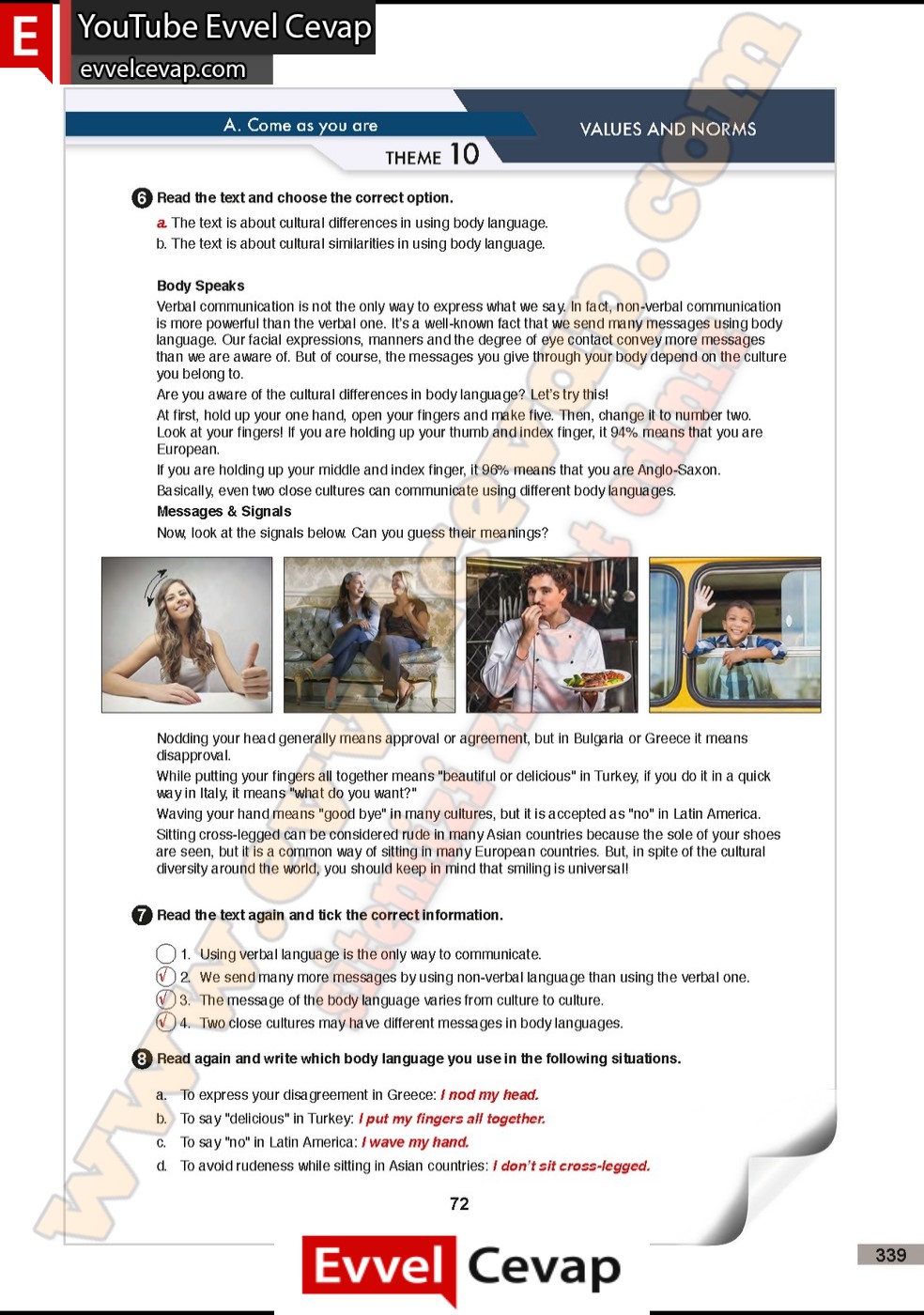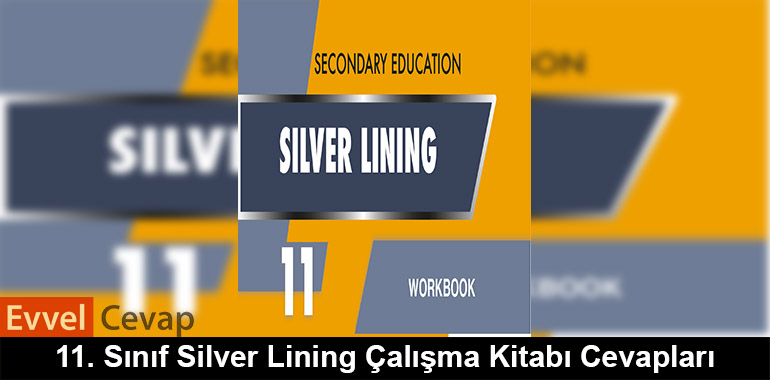11. Sınıf İngilizce Silver Lining Çalışma Kitabı Sayfa 72 Cevapları Meb Yayınları’na ulaşabilmek ve dersinizi kolayca yapabilmek için aşağıdaki yayınımızı mutlaka inceleyiniz.
11. Sınıf İngilizce Meb Yayınları Silver Lining Çalışma Kitabı Cevapları Sayfa 72
Read the text and choose the correct option.
a. The text is about cultural differences in using body language.
b. The text is about cultural similarities in using body language.
Body Speaks
Verbal communication is not the only way to express what we say. In fact, non-verbal communication is more powerful than the verbal one. It’s a well-known fact that we send many messages using body language. Our facial expressions, manners and the degree of eye contact convey more messages than we are aware of. But of course, the messages you give through your body depend on the culture you belong to.
Are you aware of the cultural differences in body language? Let’s try this!
At first, hold up your one hand, open your fingers and make five. Then, change it to number two.
Look at your fingers! If you are holding up your thumb and index finger, it 94% means that you are European.
If you are holding up your middle and index finger, it 96% means that you are Anglo-Saxon.
Basically, even two close cultures can communicate using different body languages.
Messages & Signals
Now, look at the signals below. Can you guess their meanings?
Nodding your head generally means approval or agreement, but in Bulgaria or Greece it means disapproval.
While putting your fingers all together means “beautiful or delicious” in Turkey, if you do it in a quick way in Italy, it means “what do you want?”
Waving your hand means “good bye” in many cultures, but it is accepted as “no” in Latin America.
Sitting cross-legged can be considered rude in many Asian countries because the sole of your shoes are seen, but it is a common way of sitting in many European countries. But, in spite of the cultural diversity around the world, you should keep in mind that smiling is universal!
*7 Read the text again and tick the correct information.
Q 1. Using verbal language is the only way to communicate.
Q 2. We send many more messages by using non-verbal language than using the verbal one.
O 3. The message of the body language varies from culture to culture.
O 4. Two close cultures may have different messages in body languages.
[M Read again and write which body language you use in the following situations.
a. To express your disagreement in Greece:……………………………………………………………………….
b. To say “delicious” in Turkey:……………………………………………………………………….
c. To say “no” in Latin America:……………………………………………………………………….
d. To avoid rudeness while sitting in Asian countries:……………………………………………………………..
- Cevap:

11. Sınıf Meb Yayınları İngilizce Silver Lining Çalışma Kitabı Sayfa 72 Cevabı ile ilgili aşağıda bulunan emojileri kullanarak duygularınızı belirtebilir aynı zamanda sosyal medyada paylaşarak bizlere katkıda bulunabilirsiniz.




















